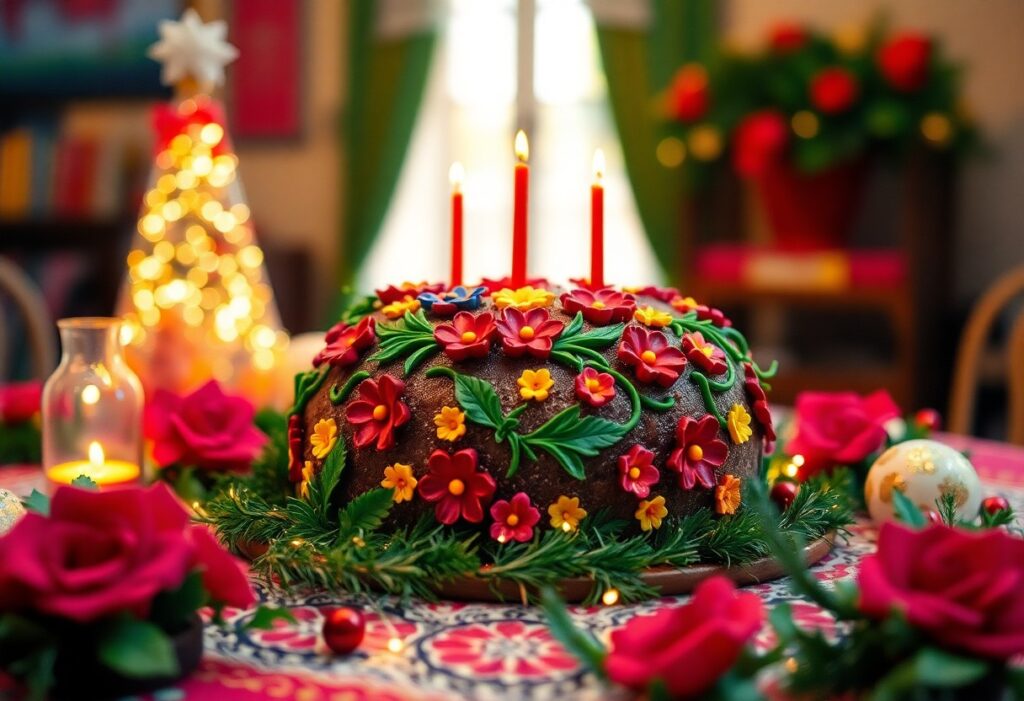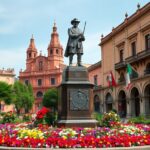Immerse yourself in the lively and colorful culture of San Miguel de Allende, where the annual celebration of Rosca de Reyes unites both locals and visitors in a cherished tradition. Every January 6th, this beloved sweet bread takes the spotlight as it commemorates the Feast of the Epiphany. The round shape of the Rosca symbolizes eternity, while the surprise hidden baby Jesus figurine adds a thrilling twist to the festivities. Those lucky enough to discover the figurine are tasked with hosting an inviting tamales feast on February 2nd, known as Día de la Candelaria. Renowned bakeries such as Kaffi and Panio are celebrated for their exceptional Roscas, making this culinary adventure a must during your visit.
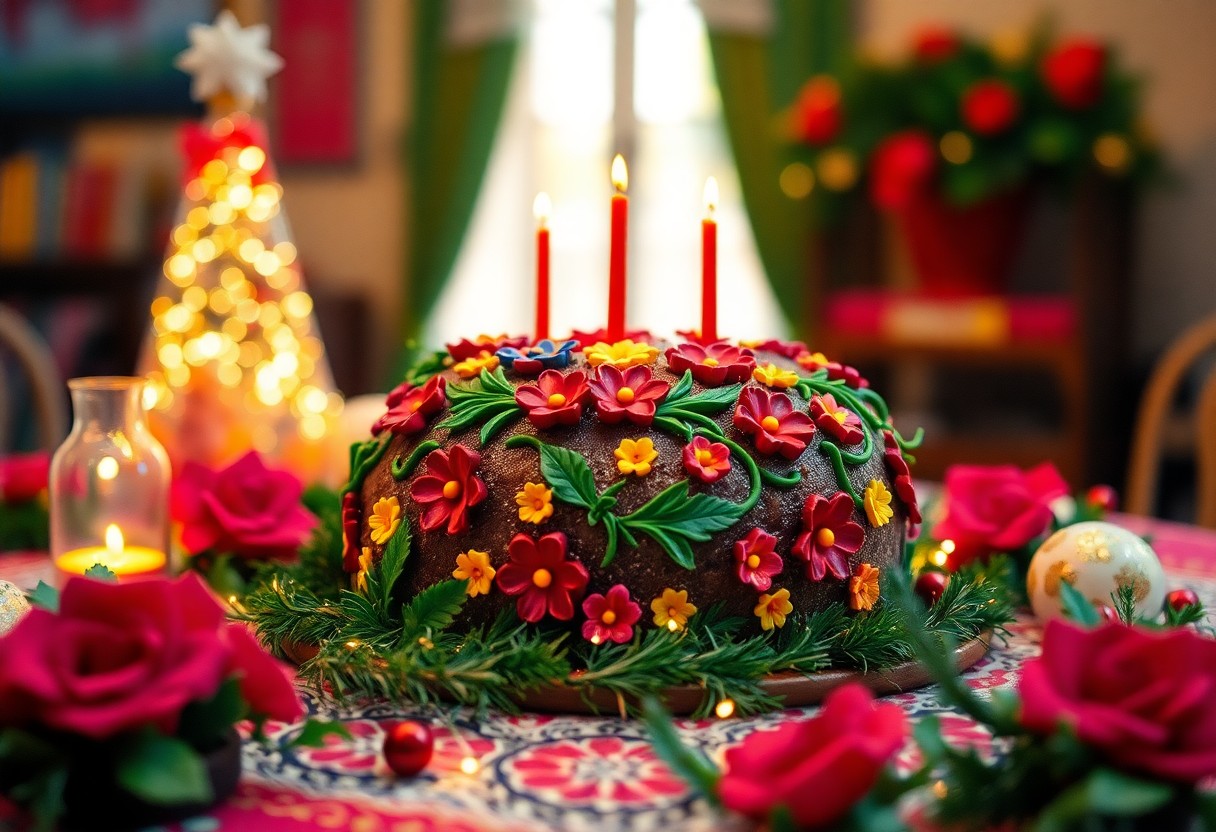
Uncover the Fascinating History of Rosca de Reyes
The Rosca de Reyes has long been a beloved symbol of celebration, with its roots deeply embedded in history. Its origins date back to Europe, specifically Spain and France, where it first emerged during the Middle Ages. As Spanish colonizers brought this tradition to Mexico, it seamlessly blended with local customs, establishing itself as an essential part of Mexican culture. The cake’s circular shape signifies the infinite love of God, while the hidden baby Jesus figurine symbolizes the Holy Family’s escape from King Herod. In San Miguel de Allende, this tradition thrives, fostering community spirit through its rich history and delightful flavors.
Exploring the Deep Symbolism of Rosca de Reyes
More than just a delicious treat, the Rosca de Reyes carries profound symbolism that resonates with tradition and faith. Its circular shape not only represents the eternal love of God but also signifies the crown of the Three Wise Men. Each element, from the colorful candied fruits to the concealed baby figure, tells a story that is steeped in community and cultural heritage. Sharing a Rosca with loved ones in San Miguel de Allende allows you to partake in a cherished celebration that beautifully merges European and Mexican traditions.
Delving into the Meaning Behind the Shape of the Rosca
Every detail of the Rosca is infused with significance. Its round form is not merely for aesthetic appeal; it symbolizes eternity and the unity of family and friends. The crown-like design serves as a tribute to the Three Wise Men, while the act of sharing the bread captures the essence of togetherness. In San Miguel de Allende, this tradition serves as a poignant reminder of the region’s rich cultural heritage and the vital importance of community connections.
The Role of Candied Fruits in the Rosca de Reyes
Decorated with vibrant candied fruits, every Rosca de Reyes is not only a delight for the palate but also a feast for the eyes. These colorful toppings symbolize the jewels adorning a royal crown, contributing both sweetness and texture to the cake. Beyond their decorative function, the fruits represent the wealth and gifts presented by the Three Wise Men. Many local bakeries in San Miguel de Allende source these fruits from nearby producers, instilling a sense of regional pride into this time-honored tradition.
The candied fruits function as delightful additions while also honoring the richness of the Wise Men’s offerings. Their bright hues reflect the joy and festivity surrounding the Epiphany celebration. When you enjoy a Rosca in San Miguel de Allende, you are not just savoring a tasty treat but also partaking in a rich history and artistry that spans generations.
The Importance of the Hidden Baby Jesus Figurine in the Rosca Tradition
Central to the Rosca experience is the hidden baby Jesus figurine, a charming and significant aspect of this tradition. Finding the figurine in your slice is both an exhilarating surprise and a meaningful obligation, as it signifies your role in hosting a tamales feast on Día de la Candelaria (February 2nd). This custom injects an element of playful anticipation into the celebration, engaging participants in a delightful shared experience.
This tradition is rich in symbolism, as the hidden baby represents the Holy Family's need to protect Jesus from King Herod. In San Miguel de Allende, this custom enhances community spirit, as families and friends gather to share the Rosca and celebrate together. Exercise caution when slicing the bread, as the figurine is small and could pose a choking hazard if not handled with care.
Intriguing Fun Facts About Rosca de Reyes
The Rosca de Reyes tradition is steeped in history and symbolism, transcending the realm of mere culinary pleasure. This King’s Cake represents a cultural experience that captivates both locals and visitors alike. In San Miguel de Allende, bakeries produce giant roscas capable of serving entire communities, transforming this celebration into a collective event. The hidden baby figurine introduces an element of excitement, as its discovery indicates that you will host a tamales feast on Día de la Candelaria. Some contemporary variations even include multiple figurines, adding an interactive twist to the festivities for everyone involved.
Marvel at the Giant Roscas in San Miguel de Allende
One of the most awe-inspiring sights during the Rosca de Reyes festivities in San Miguel de Allende is the creation of giant roscas. These enormous cakes can serve hundreds of people and often take center stage at community celebrations. Local bakeries take immense pride in crafting these oversized versions, ensuring that everyone can partake in this beloved tradition. Sharing a slice from such a grand rosca is not only a memorable experience but also strengthens the bonds of community.
Discover Global Variations of King’s Cake
Across the globe, cake traditions akin to Rosca de Reyes can be found in various cultures. For example, in France, the Galette des Rois is a puff pastry filled with almond cream, while in Spain, the Roscón de Reyes is often topped with whipped cream. Each version reflects unique local flavors and customs but shares a common theme of celebrating the Epiphany. These international adaptations showcase the widespread appeal of this festive tradition.
A closer inspection of these variations reveals fascinating differences. For instance, the French Galette des Rois uses a fève, a small porcelain figurine, instead of a baby Jesus. In Portugal, the Bolo Rei includes dried fruits and nuts, providing a different texture and flavor profile. These adaptations illustrate how the tradition can evolve while retaining its core significance across diverse cultures.
Innovative Twists on the Rosca Tradition
Modern bakers are creatively reinterpreting the Rosca de Reyes, infusing it with imaginative twists. You may come across versions filled with chocolate, cream cheese, or dulce de leche, introducing exciting new layers of flavor to the classic recipe. Some bakeries even offer gluten-free or vegan options, making this beloved tradition accessible to everyone. These innovations ensure that the Rosca de Reyes remains relevant while honoring its historical roots.
Such creative variations keep the Rosca de Reyes tradition alive in today’s diverse culinary landscape. By blending time-honored customs with contemporary tastes, bakers in San Miguel de Allende and beyond are preserving the essence of the celebration while appealing to modern preferences. Whether you choose the traditional version or a modern interpretation, the Rosca de Reyes continues to spread joy and foster connections among people.
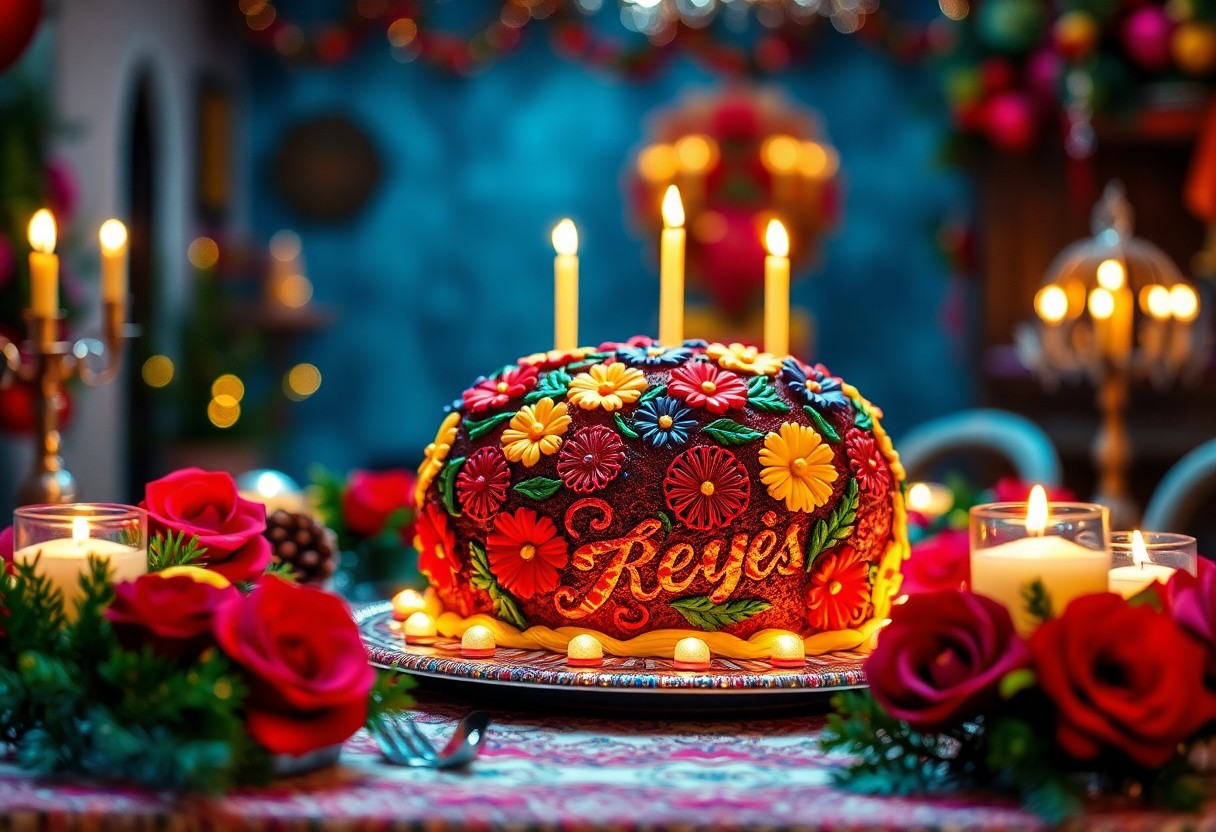
Locate the Best Rosca de Reyes in San Miguel de Allende
Your adventure in search of the ultimate Rosca de Reyes in San Miguel de Allende is about to commence. The city is home to a variety of bakeries and cafés devoted to crafting this traditional treat with passion and authenticity. From charming family-run panaderías to stylish modern cafés, there’s a delightful assortment available, each offering its unique take on the classic recipe.
Discover the Best Bakeries and Cafés for Rosca de Reyes
If you’re eager to find the best spots to enjoy Rosca de Reyes, begin your journey at Kaffi, renowned for its artisanal approach, or Café Umarán, which beautifully combines tradition with contemporary flavors. Local favorites like Panio and La Colmena serve freshly baked roscas characterized by rich, buttery textures. For an even broader selection, City Market and Panadería la Buena Vida feature both traditional and innovative versions of this festive bread.
Participate in Community Celebrations and Events for Rosca de Reyes
Beyond the bakeries, San Miguel de Allende comes alive with community events celebrating Rosca de Reyes. On January 6th, you can engage in public gatherings at the Jardín Principal, where giant roscas are shared among locals and visitors alike. These vibrant events often include music, dancing, and storytelling, allowing you to fully immerse yourself in this captivating tradition.
Joining the Rosca de Reyes festivities in San Miguel de Allende is an experience you won’t want to miss. The central square hosts grand celebrations where you can witness the cutting of massive roscas that serve hundreds. While finding the hidden baby figurine may lead to unexpected responsibilities, the joy of participating in these communal festivities is unparalleled, offering you a profound connection to the local culture and traditions.
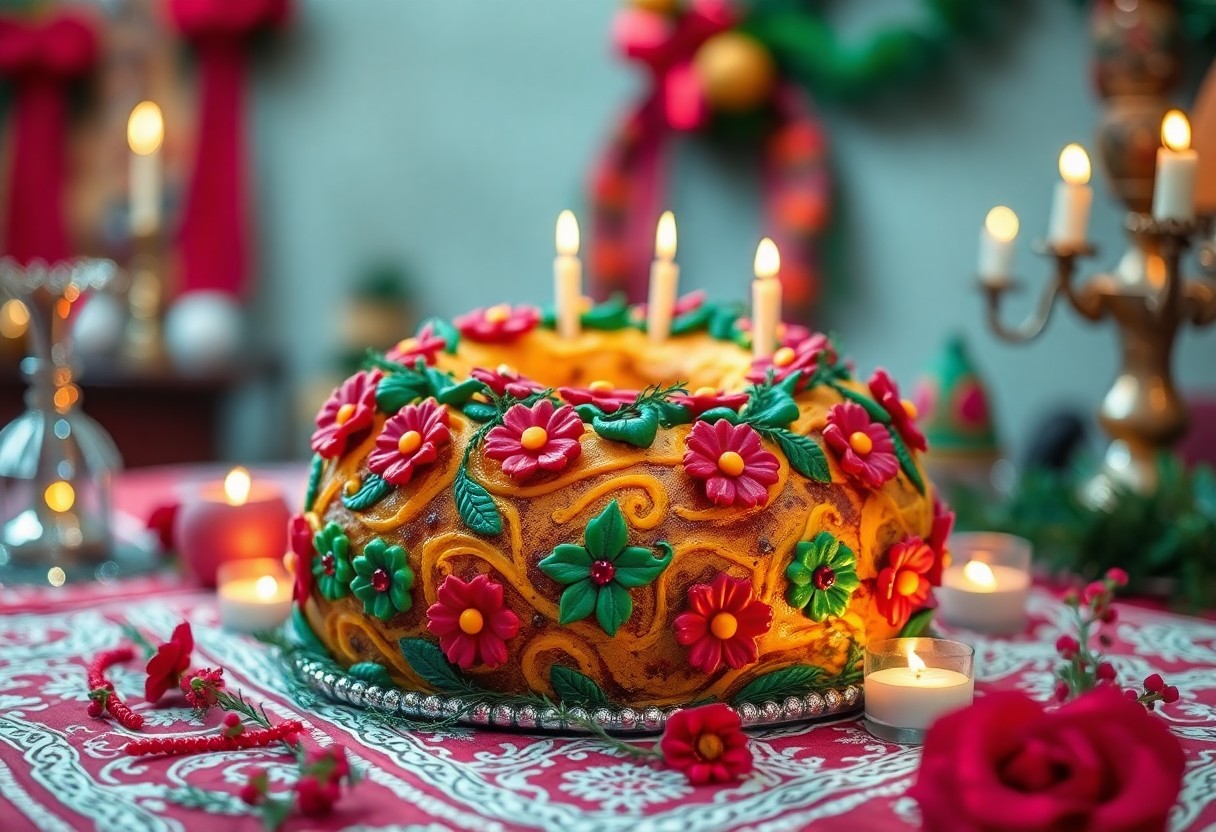
Celebrate Rosca de Reyes Like a Local in San Miguel de Allende
The Rosca de Reyes is far more than just a dessert; it embodies the cultural essence of San Miguel de Allende. Start your celebration by gathering friends and family to share the cake on January 6th. When slicing the rosca, be attentive, as finding the hidden baby Jesus figurine means you’ll be hosting a tamales feast on February 2nd. Pair the cake with traditional hot chocolate or atole, and relish the festive atmosphere in local bakeries or your home. Embrace the tradition by learning its rich symbolism and sharing stories about the Three Wise Men.
Tips for Hosting a Memorable Tamales Feast
If you discover the baby figurine in your slice, you will take on the joyous responsibility of hosting a tamales feast on Día de la Candelaria. This presents a wonderful opportunity to prepare or order a variety of tamales filled with mole, rajas, or sweet options. Invite your friends and family to join in the celebration, and don’t forget to serve atole or champurrado alongside the tamales. This delightful feast not only continues the tradition but also deepens your connections with the community.
Sharing the Rosca Tradition with Your Loved Ones
Transforming Rosca de Reyes into a treasured event can be achieved by involving your loved ones in the celebration. Gather everyone around the table, share the cake, and explain its rich symbolism while recounting stories of the Three Wise Men. Encourage children to take part, as they often delight in the excitement of searching for the hidden figurine. This tradition nurtures connections and keeps the vibrant Mexican culture alive in San Miguel de Allende.
Like many cultural practices, the joy of Rosca de Reyes is magnified when shared with others. Finding the baby figurine becomes a delightful challenge and significant responsibility, as it means hosting the tamales feast. Sharing the cake with friends and family enriches relationships and creates lasting memories. In San Miguel de Allende, this tradition is a highlight of the holiday season, intertwining delicious food with deep cultural significance. It’s crucial to explain the symbolism to younger generations, ensuring that this cherished tradition continues for many years to come.
Understanding the Cultural Importance of Rosca de Reyes in Mexico
Keep the spirit of tradition alive by acknowledging the cultural significance of Rosca de Reyes in Mexico. Celebrated on January 6th, this delightful sweet bread marks the Feast of the Epiphany, commemorating the visit of the Three Wise Men to the infant Jesus. The circular shape signifies eternity, while the hidden baby figurine represents the Holy Family’s escape from King Herod. Discovering the figurine means you’ll host a tamales feast on February 2nd, known as Día de la Candelaria. In San Miguel de Allende, this tradition unites communities, with bakeries creating giant roscas for collective celebrations that beautifully blend faith, history, and joy.
Immerse Yourself in the Joy of Rosca de Reyes in San Miguel de Allende
Now is the ideal moment to dive into the rich tradition of Rosca de Reyes in San Miguel de Allende, where this festive treat serves as a unifying force for communities. The cake’s deep symbolism and historical significance elevate it beyond a mere dessert; it embodies a celebration of culture and faith. Whether you indulge in it at a local bakery or share it with friends and family, the Rosca de Reyes provides a unique opportunity to connect with Mexican heritage. Plan your visit to San Miguel de Allende during the Epiphany season to relish this delightful tradition and create unforgettable memories.
Your Guide to Rosca de Reyes: Frequently Asked Questions
What cultural significance does Rosca de Reyes hold in San Miguel de Allende?
The Rosca de Reyes is a cherished traditional Mexican cake enjoyed on January 6th to celebrate the Feast of the Epiphany. In San Miguel de Allende, this tradition carries profound cultural and religious importance. The cake’s round shape symbolizes eternity, while the hidden baby Jesus figurine represents the Holy Family’s escape from King Herod. Sharing the Rosca with family and friends is a beloved custom deeply rooted in the community.
Where can I find the best Rosca de Reyes in San Miguel de Allende?
San Miguel de Allende features numerous bakeries and cafés renowned for their delicious Roscas. Notable locations include Kaffi on Carlos del Castillo, Café Umarán in Zona Centro, and Panio on Correo Street. La Colmena and Panadería la Buena Vida also receive high praise for their authentic and flavorful Roscas.
What should I do if I discover the baby Jesus figurine in my slice of Rosca?
Finding the baby Jesus figurine in your slice of Rosca is considered a significant honor, yet it also comes with the responsibility of hosting a tamales feast on February 2nd, known as Día de la Candelaria. This tradition adds a fun, communal aspect to the celebration, bringing people together to continue the festivities.
The Article: The Delicious Tradition of Rosca de Reyes in San Miguel de Allende appeared first on https://fallinginlovewithsanmiguel.com/
The Article Rosca de Reyes: A Tasty Tradition in San Miguel de Allende Was Found On https://limitsofstrategy.com
